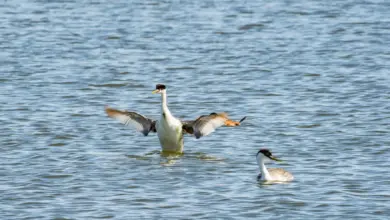Muscovy Duck Housing Ideas: Best Housing for Muscovy Ducks
Do muscovy ducks need shelter? Or can you just let them free-range? Well, here are some muscovy duck housing ideas to make sure your pets are safe from the winter and have a place to nest.
Muscovy ducks make great pets. They are quiet and, compared to other duck species, relatively clean.
Muscovy ducks also rid your backyard of any unwanted pests, such as ticks and mosquitos.
However, if you are thinking of raising Muscovy ducks at home, you need to plan accordingly.
Step one is housing.
Read on to discover the best housing for Muscovy ducks and what bedding to use.
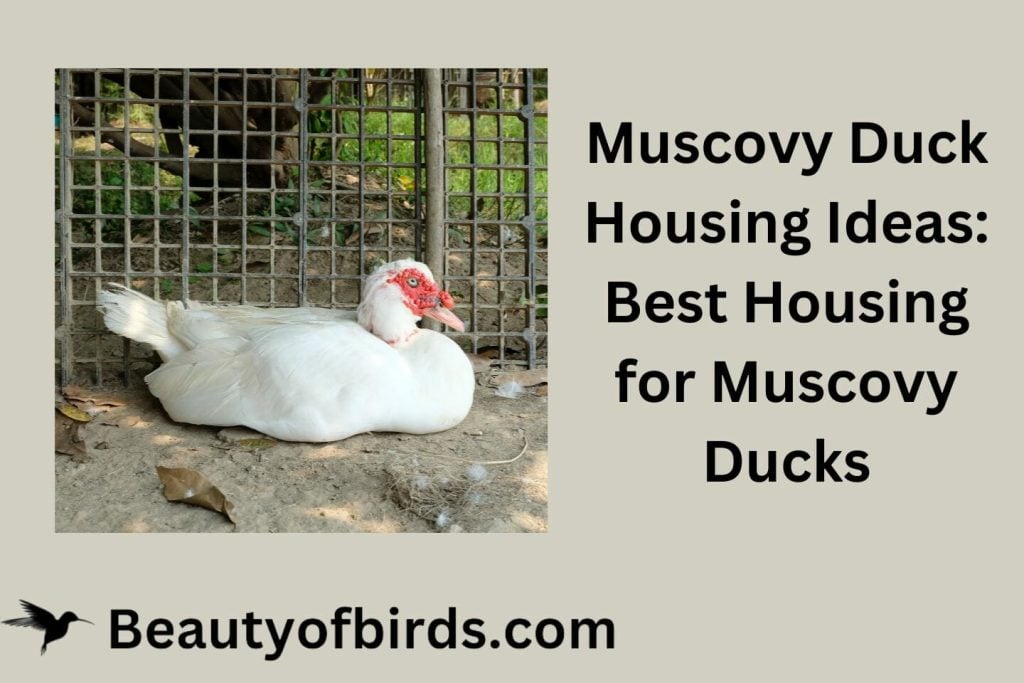
Do Muscovy Ducks Need Shelter?
Muscovy ducks are a species of waterfowl that can be found in the forests of Central and South America.
They belong to the family of perching ducks.
As the name suggests, these ducks like to perch on branches. They use their clawed, webbed feet to grip tree branches in the canopy.
In the wild, Muscovy ducks use cavities within trees to nest and evade predators. A domestic environment should be no different.
Muscovy ducks make great pets and are great for egg production. However, your Muscovies will need a place to shelter, especially if you want to breed them.
Don’t worry, though. You will not have to go on the hunt for trees with big holes in them.
In fact, domesticated Muscovy ducks are more than content with a simple structure.
Even if you prefer to keep your Muscovies free range, you should provide a place for your ducks to sleep at night.
After all, the night is dark and full of terrors – most notably foxes, badgers, and raccoons.

These predators would like nothing more than a tasty midnight snack of free-range Muscovy duck.
Another reason why Muscovy ducks need shelter is to escape freezing temperatures.
Yes, it is true that Muscovy ducks are a hardy species of waterfowl.
But, with any species originating in Central and South America, there is only so much cold they can handle.
North American winters can get cold. Real cold.
Take Upstate New York, for example. The nights here can get as low as −2 and 4 °F (−18 to −15 °C).
Any Muscovy duck exposed to this temperature for prolonged periods of time will get frostbite on their feet.
Best Housing For Muscovy Ducks
So, we’ve established that Muscovy ducks need some form of shelter. But what shelter works best?
During the day, you should allow time for your Muscovy ducks to forage outside.
Being a large species of waterfowl, they need time to exercise their muscles. This can be in the form of swimming or foraging.
They are omnivorous and will clear your backyard of any nasty pest insects, such as mosquitoes, ticks, and biting flies.
However, if you do not have suitable space to allow for free-ranging ducks, you will need to house your Muscovies in a coop or run.
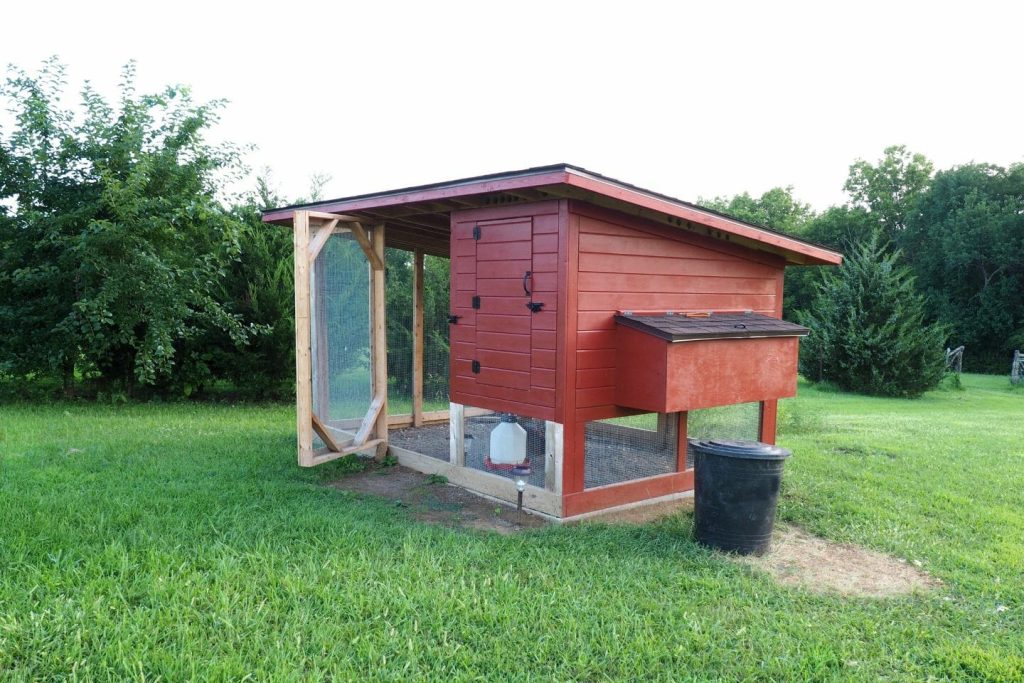
The coop or run should have adequate space – no less than 15 square feet per duck.
Any less than this, and your Muscovy ducks will become agitated and aggressive, leading to fights and the risk of serious injury.
You should also provide access to water within the coop or run. This could be a simple paddling pool sunken into the ground.
Or it could be a more elaborate pond design.
Whatever you choose, ensure the water is changed regularly. Otherwise, you run the risk of encouraging the growth of harmful pathogens that could infect your Muscovies.
The easiest structures to build are rectangular in shape.
All you need to do is cut your desired wood to size and nail everything together. Then, wrap everything in a secure layer of fencing.
Alternatively, you can buy a premade run. But this can be quite expensive.
The best kind of housing for a Muscovy duck should be completely predator-proof. Chicken wire is effective at keeping large predators at bay.
However, you may wish to barricade the periphery of the base with large stones or rocks. This prevents wild animals or stray dogs from digging under the shelter.
Decorate the interior with branches for your duck to perch on.
Do I Need To Provide Nesting Boxes?
Within the main run, you should provide nesting boxes.
The main shelter of a Muscovy house can be open to the elements; as long as it is well protected from predators.
However, within the shelter, you need to provide enclosed, slightly raised nest boxes.
You should aim to have at least one nest box per duck.
The nest boxes should have at least three solid sides to protect against the elements. This is where females will come to lay their clutch of eggs, so it is important to ensure a safe space for her.
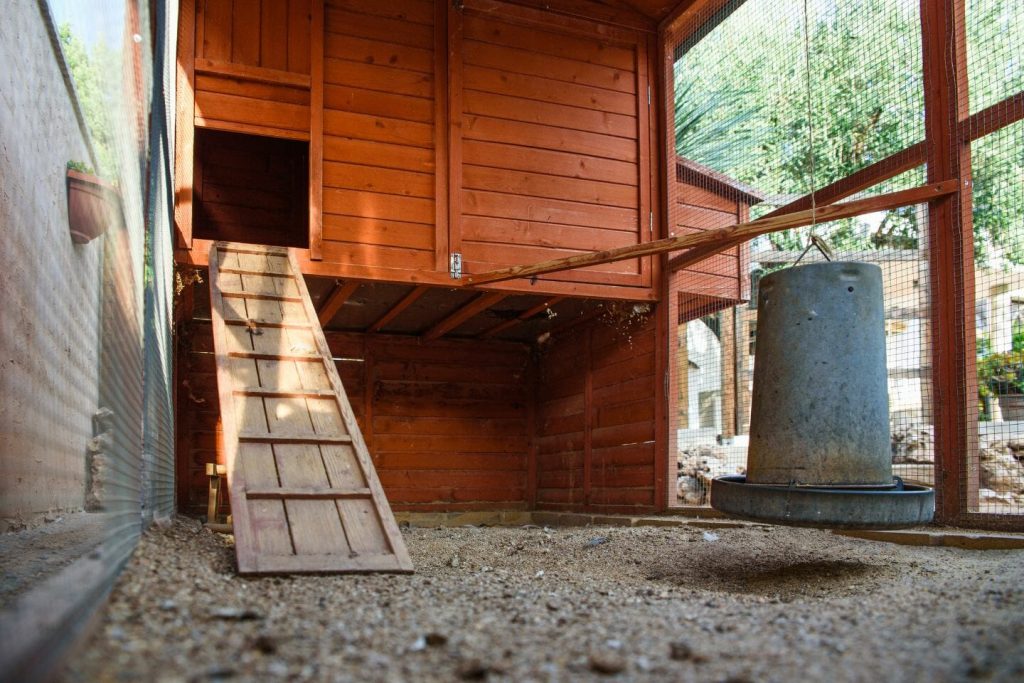
Aim for the nest box to be at least 2 feet high and 1.5 feet in width and depth, with a layer of bedding on the ground.
The nest boxes can be wooden boxes, pet crates, or upturned buckets with holes cut into them. You can get creative with ideas as long as the space is dark and well-protected.
If space is on your side, you can also keep your Muscovy ducks with chickens. However, you must ensure there is enough space per duck and that they have separate spaces to lay their eggs.
Best Bedding For Muscovy Ducks
Within nest boxes, you should certainly provide a nesting substrate or bedding.
However, don’t just whack the first thing you see into the nest box. You need to take into account certain factors, such as health, availability, and value for money.
Common pet stores items, such as straw or sawdust, have their pros and cons.
But let’s take a closer look at some materials you can use as bedding:
Straw
Straw is one of the most commercially available items. It is cheap and provides vital insulation.
However, when damp, the fungus Aspergillus fumigatus spreads like wildfire. If spores are inhaled, this fungus can cause respiratory problems similar to that of pneumonia.
If using straw, ensure the bedding is regularly changed.
Leaves
Leaves are plentiful; there’s no doubt about it. You can pick up piles for free in your garden or local park.
However, just like straws, they are susceptible to fungal growth if wet. Depending on the species, they can also be toxic to your Muscovies.
If using leaves, thoroughly dry them before use. You can store leaves in bags in a cool, dry place before use.
Pine needles
Similarly to leaves, pine needles are in plentiful supply, depending on where you live.
Pine needles also contain shikimic acid, an antimicrobial and antifungal compound.
However, as the needles dry, they can become dry and, as the name suggests, needle-like.
The needles can poke tiny holes in your ducks’ webbed feet. This can cause health risks, such as the common bacterial infection, bumblefoot.
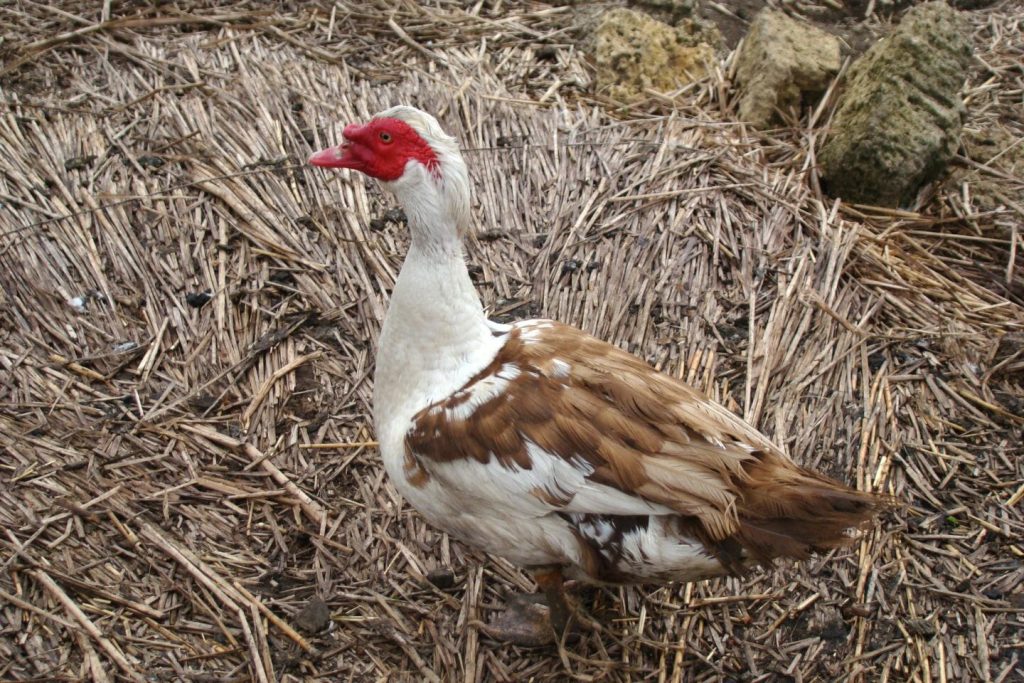
Sawdust
Sawdust is a collective term for the accumulated fine residue after a tree or wood has been cut.
There are many different types of sawdust. Common sawdust types include cedar, aspen, and pine.
Some sawdust, such as cedar, produces a lot of dust. This can cause respiratory problems for both humans and Muscovies.
Aspen is dust free but is not commonly stocked in pet stores. Because of this, it is quite a pricy material to use as bedding.
Pine sawdust is your best bet for bedding.
Not only is it antimicrobial and antifungal, but there is also no dust, and it is a relatively cheap material to use. Pine also provides good insulation to keep your ducks warm.
Whatever material you use as bedding for your Muscovy ducks, ensure you regularly clean and change the substrate to reduce the risk of spreading diseases.
You may also want to try a hybrid of different materials. Play around and experiment; see which ones your ducks prefer.
You may also notice that broody females will add their soft down feathers to their nest. This is just another layer of warmth for her developing clutch.
Muscovy Duck Not Using Shelter: What Should You Do?
Humans are not unique when it comes to stubbornness.
If you have owned other pets, such as dogs or cats, you may have also experienced a form of stubbornness, especially when it’s time to go to their bed or back from a walk.
Muscovy ducks are no different, especially if you have rescued an adult Muscovy duck.
If you have purchased or rescued mature Muscovy ducks anywhere over the age of 28 – 30 weeks of age, you may experience some difficulty in getting your Muscovies to sleep in a designated shelter.
If you have raised Muscovy ducks from eggs or want to do this, you should have an easier time getting the ducks to sleep within designated structures.

Unlike chickens, who will often just take themselves to bed, Muscovy ducks prefer to sleep outside.
You could try coercing them inside the shelter with food. If that fails, you may have to round them up and urge them inside, much like a sheepdog herding its flock of sheep.
One tried and tested way of getting your Muscovies inside is through a process of conditioning. This is common when training puppies.
Essentially, you should reward good behavior.
If your Muscovy enters its shelter when you call, offer a reward. A reward will be associated every time the Muscovy enters the shelter, and the action will stick.
Frequently Asked Questions
What kind of shelter do Muscovy ducks need?
The easiest structures are rectangular, and they must be completely predator-proof. You can achieve this by covering in chicken wire and rocks on the base.
Do Muscovy ducks need a house?
However, if you have a duck pond with an island on it, your Muscovies should be safe to sleep there.
What do Muscovy ducks like to nest in?
Provide bedding, such as pine sawdust, to keep the ducks warm.
Do Muscovy ducks need shelter in winter?
Although they are hardy, Muscovies are tropical birds and cannot tolerate temperatures too low. They will need a warm place to nest at night.
Wrap Up
A shelter should be provided for Muscovy ducks for protection against predators and cold weather. The shelter should be at least 15 square feet per duck.
Within the shelter, provide nest boxes – at least one per duck.
Ensure the nest boxes have bedding. Pine sawdust works best as it reduces the risk of bacterial and fungal infections.
Do keep experimenting with what your Muscovy duck likes and doesn’t like. Thank you for reading.



